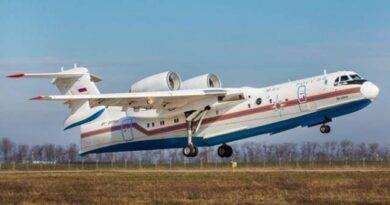Strategic Fit Strategy of Southwest Airlines: How Operational Alignment Drives Success
Southwest Airlines is a standout example of strategic fit in the airline industry. The company has built a powerful low-cost strategy by aligning every part of its operations. From the planes it flies to the way it trains employees, every decision supports efficiency, simplicity, and savings.
This article explores how Southwest’s strategic fit gives it a long-term advantage, with lessons any business can apply.
What Is Strategic Fit?
In business strategy, strategic fit means that a company’s structure, resources, and processes all support a central strategy. There is no wasted effort, no misaligned departments, and no conflicting goals.
In the case of Southwest Airlines, strategic fit means every aspect of its operations supports its mission to offer low-cost, reliable, and customer-friendly air travel.
The Core Strategy of Southwest Airlines
Southwest Airlines follows a low-cost carrier (LCC) model. But it doesn’t stop at offering low fares. The company focuses on:
- Operational efficiency
- Simple processes
- High aircraft utilization
- Strong employee engagement
- Customer-focused service
All of these elements reinforce one another. That’s the essence of strategic fit: systems that work together, not in silos.
Southwest Airlines – Strategic Fit Diagram
| Key Activities and How They Support the Strategy | |
| Activity | Strategic Benefit |
| Single Aircraft Type (Boeing 737) | – Lower maintenance & training costs – Faster turnaround times |
| Point-to-Point Routing | – Fewer delays – Higher aircraft utilization |
| No Assigned Seating / No Meals | – Speeds up boarding – Cuts catering & cleaning costs |
| Cross-trained, Motivated Staff | – Flexible operations – Lower labor costs |
| Quick Turnaround Times | – Planes fly more = more revenue |
| Direct Online Booking | – Avoids third-party fees – Simpler customer experience |
How Southwest Airlines Achieves Strategic Fit
Let’s look at the key elements of Southwest’s strategic alignment.
1. Single Aircraft Type: Boeing 737
Southwest operates only Boeing 737 aircraft. This choice lowers costs in several ways:
- Simplifies pilot and crew training
- Reduces spare parts inventory
- Cuts maintenance complexity
- Improves scheduling flexibility
Using one aircraft model supports fast turnarounds, fewer delays, and cost savings. It also means more efficient operations at scale.
2. Point-to-Point Routing Instead of Hub-and-Spoke
While most airlines operate a hub-and-spoke network, Southwest uses a point-to-point system. This model allows passengers to fly directly between cities without connecting through major hubs.
Benefits include:
- Shorter flight times
- Reduced delays and cancellations
- Higher aircraft utilization
- Greater schedule flexibility
This routing supports Southwest’s goal of fast, convenient travel.
3. No Assigned Seating or Free Meals
Southwest’s no-frills model skips extras that slow things down or add costs. That includes:
- No assigned seating: Faster boarding and turnaround
- No in-flight meals: Lower catering and cleanup costs
Instead, Southwest focuses on speed, simplicity, and friendly service.
4. Cross-Trained, Motivated Employees
Southwest invests in its people. Employees are cross-trained to handle multiple roles. For example, gate agents may also help load bags or assist during boarding.
This flexibility improves:
- Labor efficiency
- On-time performance
- Customer experience
Plus, Southwest’s culture emphasizes teamwork, humor, and care. This boosts morale and reduces turnover.
5. Fast Turnaround Times
Turnaround time is the time a plane spends on the ground between flights. For Southwest, this is a critical performance metric.
With efficient boarding, cleaning, and fueling, Southwest turns planes around in 25 minutes or less. More flying time per day means more revenue and better asset utilization.
6. Direct Online Booking
Southwest promotes direct booking through its website and app. It does not list flights on third-party travel sites.
Why this matters:
- Avoids commission fees
- Builds direct relationships with customers
- Allows more control over promotions and pricing
- Improves data collection and personalization
The Competitive Power of Strategic Fit
The power of Southwest’s strategy doesn’t come from one single decision. It comes from how all the parts fit together.
This integration makes the business model hard to copy. A competitor could imitate one part—say, using only one aircraft type—but without the full system, they won’t match Southwest’s results.
Strategic fit builds:
- Cost advantages
- Operational consistency
- Brand strength
- Customer trust
Results That Prove It Works
Thanks to its aligned operations, Southwest Airlines has:
- Maintained profitability even in downturns
- Consistently ranked high in customer satisfaction
- Achieved some of the lowest costs per available seat mile (CASM)
- Built a loyal customer base across the U.S.
Southwest isn’t just cheap—it’s efficient, reliable, and well-run.
Conclusion: Lessons from Southwest’s Strategic Fit
Southwest Airlines shows how a well-executed strategic fit strategy can drive success for decades. Every activity, from plane maintenance to employee training, supports a common goal. This creates a business model that’s simple, scalable, and hard to beat.
For any company looking to sharpen its strategy, the lesson is clear:
Don’t just choose a direction—align everything to support it.


